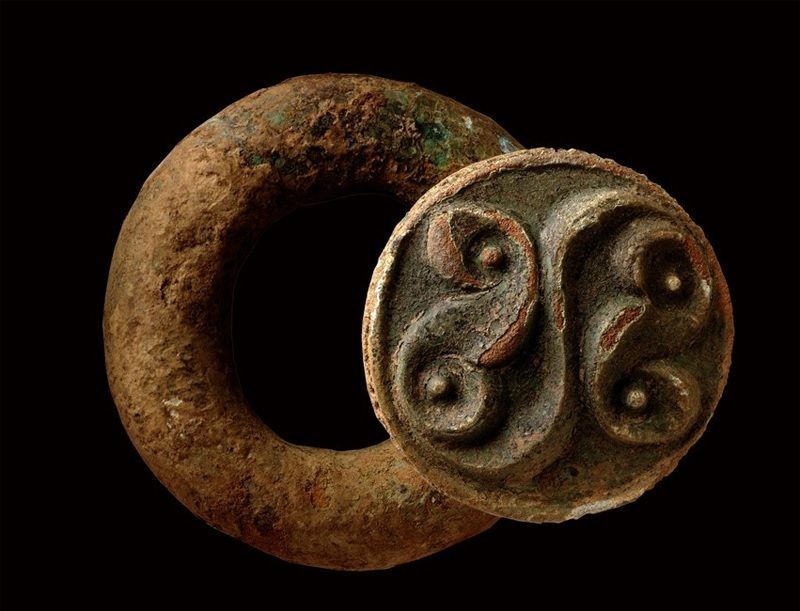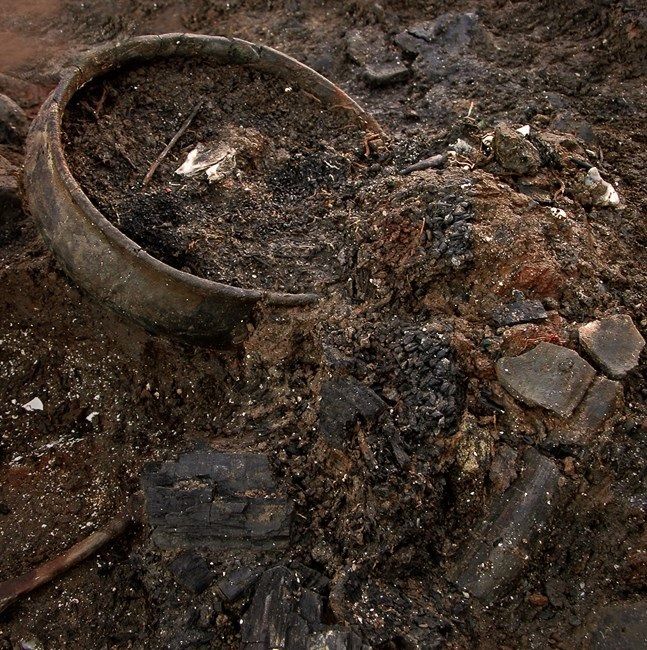Post by UKarchaeology on Sept 25, 2015 19:56:45 GMT



As part of a four year project, archaeologists are about to start work on a nine month excavation that will provide us with extraordinary testimony to the lives of people who once prospered in Bronze Age Britain. Historic England, formerly known as English Heritage, and Hanson Building Products are jointly funding the Cambridge Archaeological Unit to excavate 1,100 square metres of the Must Farm site in Cambridgeshire. The wider Flag Fen Basin has a long history of revealing internationally significant Bronze Age finds.
The excavation site, a settlement dating to the end of the Bronze Age (1000-800 BC) and once protected by a wooden palisade, was destroyed by a dramatic fire that caused the dwelling to collapse into the river, preserving the contents in situ. The result is an extraordinary time capsule containing exceptional decorated textiles made from lime tree bark, rare small pots and jars complete with past meals still inside, and exotic glass beads that hint at a sophistication not normally associated with the Bronze Age. The finds, taken together, provide a full picture of prehistoric life.
Much more to be discovered
David Gibson, Archaeological Manager at the Cambridge Archaeological Unit, said: “Usually at a Later Bronze Age period site you get pits, post-holes and maybe one or two really exciting metal finds. Convincing people that such places were once thriving settlements takes some imagination. But this time so much more has been preserved. It’s a fantastic chance to find out how people in the Late Bronze Age lived their daily lives including, how they dressed and what meals they ate.”
It is believed those living in the settlement were forced to leave everything behind when it caught on fire. Archaeologists have already carried out an exploratory dig of the site and found items such as a charred pot, with the food and spoon hastily left behind. Such is the level of preservation due to the deep waterlogged sediments of the Fens, the footprints of those who once lived in the settlement were also found. These finds suggest there is much more to be discovered in the rest of the settlement. It won’t be until late summer that these types of finds from this excavation will start to emerge.
Duncan Wilson, Chief Executive of Historic England, said: “This site is internationally important and gives a fascinating insight into the lives of our ancestors. The combination of sudden abandonment followed by exceptional preservation means that there is a real possibility of further exciting discoveries. This could represent a moment of time from the Late Bronze Age comparable to the connection with the past made by the objects found with the Mary Rose.”
Brian Chapman, Head of Land & Mineral Resources at Hanson Building Products, said: “We’re delighted to be part of this incredible project which demonstrates our commitment to preserving the unique history of the site and look forward to working closely with our partners over the coming months and years.“
Kasia Gdaniec, Senior Archaeologist for Cambridgeshire County Council, said: “This exciting excavation will contribute valuable new information about how people were living and working around the wetland margins in great detail.”
A major wetland site
After the excavation, the team will take all the finds for further analysis and conservation. Eventually they will be displayed at Peterborough Museum and at other local venues. The end of the four year project will see a major publication about Must Farm and an online resource detailing the finds.
The site, now a clay quarry run by Hanson Building Products, is close to modern day Whittlesey, Cambridgeshire and sits astride a prehistoric watercourse inside the Flag Fen basin. The site has produced large quantities of Bronze Age metalwork, including a rapier and sword in 1969, and more recently the discovery of nine pristinely preserved log boats in 2011. This places Must Farm alongside similar European Prehistoric Wetland sites; the ancient loch-side dwellings known as crannogs in Scotland and Ireland; stilt houses, also known as pile dwellings, around the Alpine Lakes; and the terps of Friesland, manmade hill dwellings in the Netherlands.
(pics & source at: www.pasthorizonspr.com/index.php/archives/06/2015/bronze-age-site-destroyed-by-fire-to-be-excavated-further )
